ITALY
Rome

Rome
Rome
Rome has been the capital of Italy since 1871. It is a gigantic city with almost 3 million inhabitants. Rome has a rich history. Rome was the most powerful place of Antiquity, the Roman Empire and the Catholic world.
What almost everyone immediately thinks about when thinking about Rome is the Vatican City: the mini-state within Rome, where the Pope resides. When you visit Rome, the Vatican City cannot be skipped. In Rome and the Vatican City you can still find several buildings from the Roman era. This makes Rome a perfect destination for a city trip.
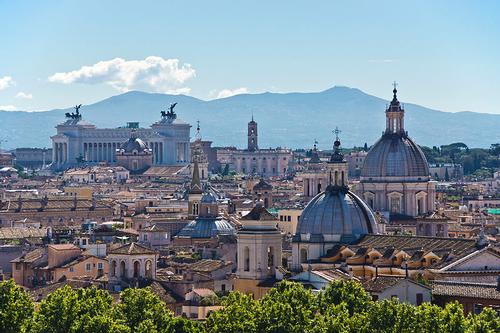 RomePhoto: Bert Kaufmann CC 2.0 Generic no changes made
RomePhoto: Bert Kaufmann CC 2.0 Generic no changes made
Location
Rome is located in the center of Italy in the province of Lazio. The name Rome refers to both the province of Rome and the capital of this province. The capital of Italy, Rome has an area of 1,285 km² and is built on 7 hills. Two rivers flow through Rome, the Tiber and the Aniene. The province of Rome covers an area of 5,351 km² and has more than 4 million inhabitants. Most of the inhabitants of the province therefore live in the capital, Rome.
Weather
Rome has a Mediterranean climate with warm, dry summers and mild and wet winters. The average annual temperature in Rome is 15°C. Below is a list of other weather facts in Rome.
- Average maximum temperaturer Rome: 21 °C
- Average minimum temperature Rome: 10 °C
- Average rainfall in Rome: 3,78 centimeter
- Sunny days/year in Rome: 2.516 uur
In the summer months it is probably too hot for a city trip. In spring and autumn the weather is usually great for a city trip to Rome. It is then between 15° C and 25° C. Moreover, it is often less crowded in Rome in autumn and spring than during the high season (summer).
History
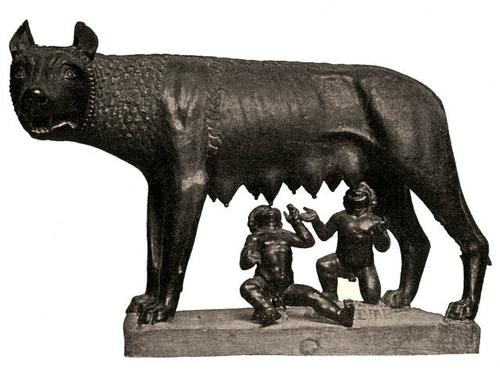 Rome Mythe of Romulus en RemusPhoto: Wolpertinger in the public domain
Rome Mythe of Romulus en RemusPhoto: Wolpertinger in the public domain
Everyone probably knows the myth about the origin of Rome. The story in Roman mythology is about the twin brothers Romulus and Remus. The twin brothers have suckled a she-wolf. The first city center was built on the Palatine Hill, built by Romulus after killing his twin brother Remus. Romulus was the first of the Seven Kings of Rome.
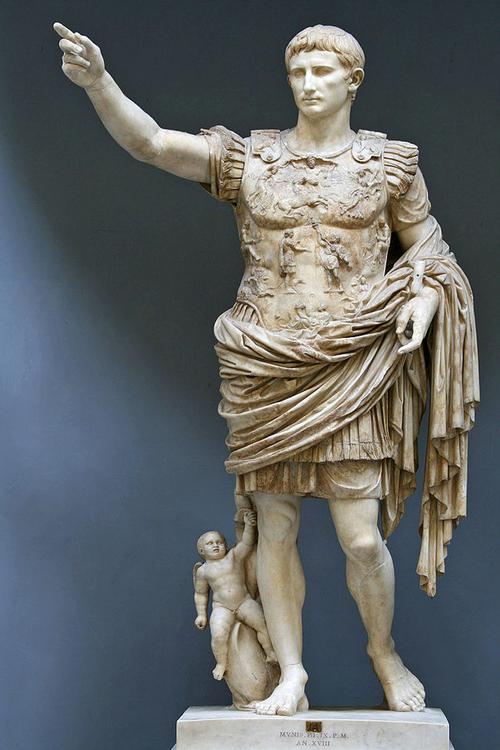 Rome statue of Emperor AugustusPhoto: Till Niermann in the public domain
Rome statue of Emperor AugustusPhoto: Till Niermann in the public domain
With the arrival of the Republic, Rome opted for expansion and after the Punic Wars, Carthage, Corsica and Sardinia were added to the Republic. The republic came to an end in 82 BC and the dictator Silla came to power. The Roman Empire developed into a great empire. The empire encompassed all the countries around the Mediterranean, much of Western Europe, and part of the Middle East. The greatest expansion took place during the reign of the dictator Gaius Julius Caesar. Caesar was murdered in 44 BC. Emperor Octavius Augustus, Caesar's adopted son and first emperor, brought Rome into the "golden age": a long period of peace and stability, with many monumental works of art. Yet the Roman Empire also fell into decline and the population of Rome diminished considerably.
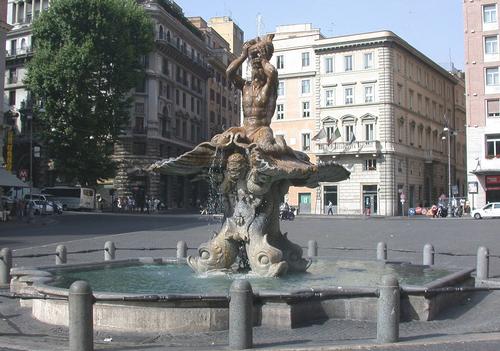 Rome Triton Fountain BerniniPhoto: Pubic Domain
Rome Triton Fountain BerniniPhoto: Pubic Domain
Rome developed into the center of the Catholic faith. The Popes became increasingly important. The Holy Roman Empire was established around 800. Between 1300 and 1600, many churches were built, beautifully painted with frescoes by Renaissance artists such as Raffaello and Michelangelo. In the 16th century, many buildings were also designed by architects such as Bernini and Borromini. Many pilgrims from around the world visited the Eternal City to admire its Baroque squares, fountains and monumental basilicas.
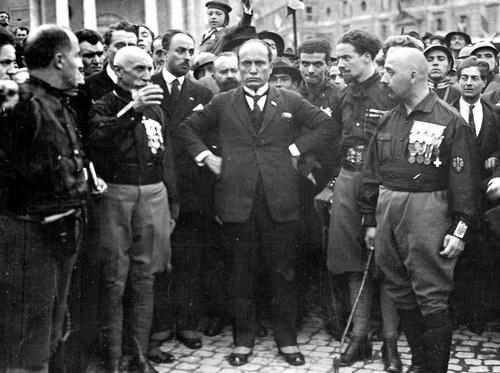 Mussolini March on RomePhoto: Public Domain
Mussolini March on RomePhoto: Public Domain
In 1870 it was decided by referendum that Rome would belong to the kingdom of Italy. After the March on Rome in 1922, Mussolini came to power. In 1943 this regime was overthrown by the Allies. In 1946 the royal family was abolished and the republic proclaimed. At present, the city has about 2.8 million inhabitants. Thanks to its rich history, Rome has become one of the most popular tourist destinations in the world.
Sights
Rome and the Vatican City are really overflowed with interesting sights. To give you an idea of cultural Rome, a number of nice attractions are highlighted here. The famous Trevi Fountain can be found in Piazza di Trevi. Trevi means "three roads" this refers to the fact that in the past three roads converged at the site of the fountain. In the Baroque fountain you will find the Roman sea god Neptune on a chariot pulled by horses with wings. Nicola Salvi was allowed to design the Trevi Fountain as a result of an architectural competition organized by Pope Clement XII. Construction of the fountain started in 1732 and the structure was completed in 1762. Nicola Salvi had already died by then.
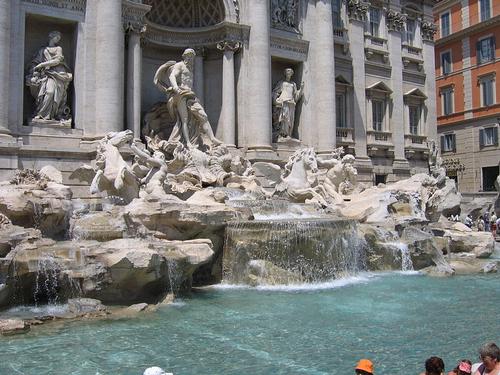 Trevi Fountain RomePhoto: Public domain
Trevi Fountain RomePhoto: Public domain
An attraction in Rome that really appeals to the imagination is the glorious Colosseum from the time when Rome was the center of the Roman Empire. The construction of the gigantic complex was completed in AD 80 under the authority of Emperor Titus.
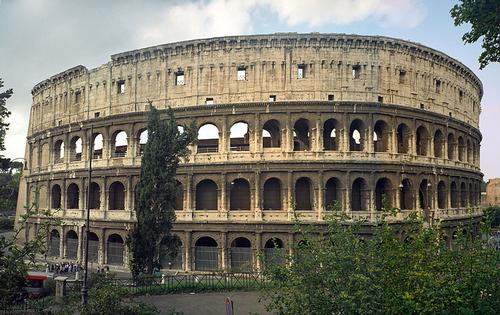 Colosseum RomePhoto: Jerzy Strzelecki CC 3.0 Unported no changes made
Colosseum RomePhoto: Jerzy Strzelecki CC 3.0 Unported no changes made
The name of the structure most likely refers to the colossal size of the amphitheater. With a height of 57 meters, a width of 156 meters and a length of 188 meters, it was not only the largest amphitheater in Rome, but in the entire Roman Empire. The arena, where the gladiators fought each other also fought wild animals such as hyenas, leopards and lions, measured 84 by 54 meters and could seat 50,000 spectators. If citizens of Rome had been convicted, they could be publicly fed to wild animals in the Colosseum.
 Forum Romanum RomePhoto: Matt Brisher CC 2.0 Generic no changes made
Forum Romanum RomePhoto: Matt Brisher CC 2.0 Generic no changes made
The Forum Romanum formed the heart of the city, this square was central to local politics and commerce. The Forum had many uses, ranging from public speaking to fighting gladiators. As the Roman Empire began to disintegrate, the structures that make up the Roman Forum also fell into disrepair. In the 18th century, the Forum was excavated and partially restored. It does not take much imagination to be able to present the image of the Forum back to its former glory, as relatively much is still standing today. Particular highlights include the Arch of Septimius Severus, the Basilica Aemilia, the Temple of Caesar, the Temple of Saturn and the Temple of Vesta, as well as the nearby palaces of the Palatino.
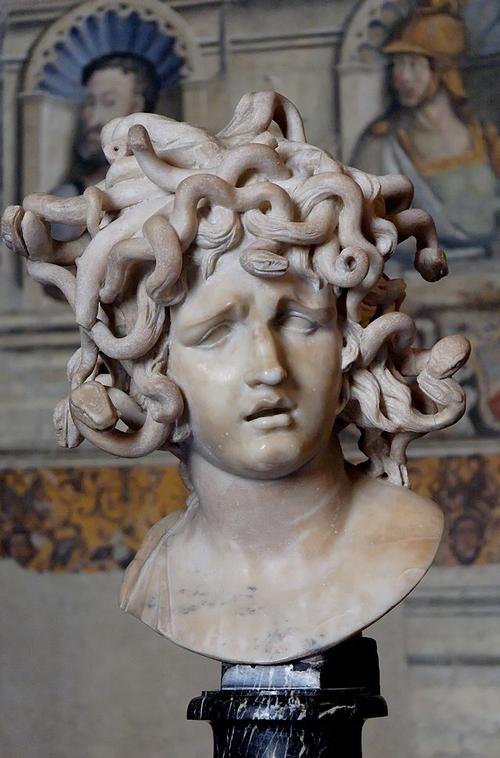 Bernini's Medusa in the Capitoline Museums in RomePhoto: Jastrow in the public domain
Bernini's Medusa in the Capitoline Museums in RomePhoto: Jastrow in the public domain
The Capitoline Museums are located on the east and west sides of the Piazza del Campidoglio and the buildings (Palazzo dei Conservatori, the Palazzo Nuovo and the Centrale Montemartini) now form one museum. The facades of the buildings were designed by Michelangelo and you will see some of the most celebrated statues of the ancient world, such as the equestrian statue of Marcus Aurelius that once stood in the piazza, the Dying Gaul and the Capitoline Wolf. You can also see Bernini's beautiful Medusa. There is also much to admire in terms of painting, such as works by Caravaggio, Tintoretto, van Dyck, Velasquez and Rubens.
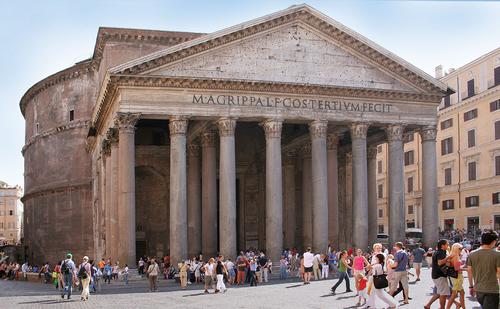 Pantheon RomePhoto: Roberta Dragan CC 2.5 Unported no changes made
Pantheon RomePhoto: Roberta Dragan CC 2.5 Unported no changes made
The centrally located Pantheon is an iconic monument dedicated to the gods of Ancient Rome. The Pantheon has a long history, originally built in 27 BC by order of the Roman statesman Marcus Vipsanius Agrippa and then rebuilt after fire damage in AD 110, during the reign of Emperor Hadrian. The Pantheon was completed in 126 AD and the portal is supported by 16 Corinthian columns supporting the pediment. But the most remarkable thing about the Pantheon is its enormous dome (more than 43 meters). At the time it was an architectural masterpiece and the largest dome in the world.
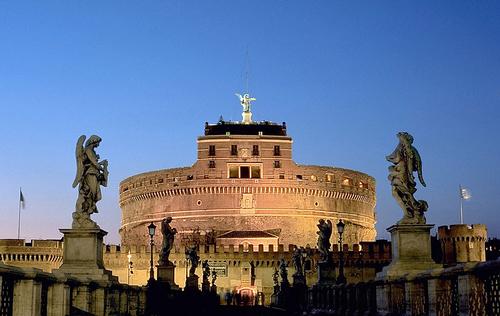 Sant Angelo Castle RomePhoto: Public domain
Sant Angelo Castle RomePhoto: Public domain
In the 6th century, Sant Angelo Castle was converted into a papal fortress and connected to the Vatican palaces by a series of underground passages. These have been used by various popes when they felt threatened. The circular Sant Angelo castle was originally built as the mausoleum of Emperor Hadrian and is now an interesting museum. It is also here that Puccini's Tosca found her dead.
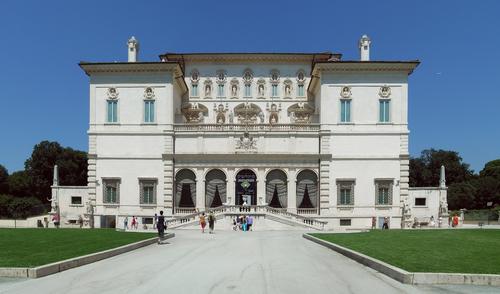 Villa Borghese RomePhoto: Alessio Damato CC 3.0 Unported no changes made
Villa Borghese RomePhoto: Alessio Damato CC 3.0 Unported no changes made
Villa Borghese is probably Rome's finest museum, and it has been carefully restored with tremendous attention to detail. Construction began in 1613 and it was intended to be both a beautiful venue for summer parties and a home for Cardinal Scipione Borghese's lavish collection of paintings and sculptures. Some of the artworks in the original collection are now displayed at the Louvre in Paris. Over the years, gaps in the collection have been filled, and paintings by Raphael, Botticelli and Pinturicchio can be admired, just to name a few.
Every year many interested people go to Rome to visit the Vatican City. The Vatican does not officially belong to Rome and Italy; it is an autonomous state within the city. The Vatican City is the smallest independent country in the world and it is also affectionately referred to as a miniature state. Vatican City was founded in 1929 and is the Catholic center of power in the world, The head of the Vatican City is the Pope. Vatican City has about 830 inhabitants. These are mainly clergy and members of the Pontifical Swiss Guard (the Vatican's surveillance unit). In 1984 the state as a whole became part of the UNESCO World Heritage List.
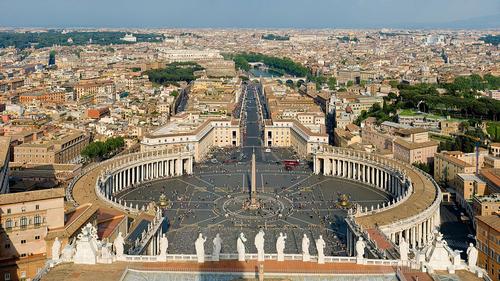 St Peter's Square Vatican CityPhoto: Diliff CC 3.0 Unported no changes made
St Peter's Square Vatican CityPhoto: Diliff CC 3.0 Unported no changes made
The Vatican Museums are a group of palaces that house some of the most important collections in the world. There are several sections, including the Etruscan Museum, Raphael Rooms and Loggia, the Egyptian Museum and the world famous Sistine Chapel, which is probably the most important part of this huge museum complex. Also worth a visit are the Stanze di Raffaello, several rooms of a Vatican apartment painted by Raphael at the request of Pope Julius II.
Built for Pope Sixtus IV in 1475, the Sistine Chapel is the ultimate building and the crown of the Vatican. In 1483 it was decorated by some of the best painters in the world - Botticelli, Ghirlandaio, Pinturicchio, Signorelli and others. However, it was Michelangelo with his masterpiece 'The Last Judgment', who made the chapel world famous. Pope Julius II asked Michelangelo to paint the ceiling of the chapel in 1508 and this was an enormous job to do. The ceiling is 929 square meters and it took him more than three years to paint the scenes, some of which depict the story of creation and for which he was paid very little. Michelangelo's painting 'The Last Judgment' was painted on the wall above the altar in 1541. When it was unveiled, it shocked many Vatican officials, especially one member, Biago di Cesena, who criticized the obscene nudes. In retaliation, Michelangelo painted Biago's face on a dog-eared figure in Hades.
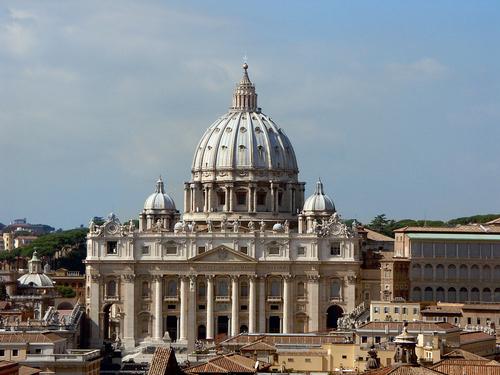 Saint Peter RomePhoto: Wolfgang Stuck in the public domain
Saint Peter RomePhoto: Wolfgang Stuck in the public domain
St. Peter's was created in 326, above the tomb of St. Peter, the founder of the Church of Rome. The church was demolished during the Renaissance to make way for a large basilica that was built in about 150 years. The dome, which dominates the church, was designed by Michelangelo and you can reach the top via an elevator and stairs. The church contains a number of well-known works, including the canopy over the high altar, a majestic creation by Bernini, the gilded bronze chair of St. Peter, the monument of Clement XIII by Canova and Michelangelo's famous 'Pietà', a beautiful marble statue. Today the basilica is 187 meters long and 132 meters high and is the heart of Christianity. A staggering 60,000 people can take place for the services and blessings.
These are just some of the unforgettable sights to see in Rome, Italy. And then we have not even discussed the beautiful shops, beautiful streets, delicious restaurants, interesting other museums and attractions that the Italian capital has. For a cultural city trip full of pleasure you go to Rome.
Tips
Rome's nightlife often takes place outside. In the summer months it is too warm inside in the evenings and it is much more pleasant outside. A well-known entertainment district is the area around the Trevi Fountain. Nice places to have a drink are the Piazza Navona with its three fountains, but the Piazza Santa Maria is also very popular.
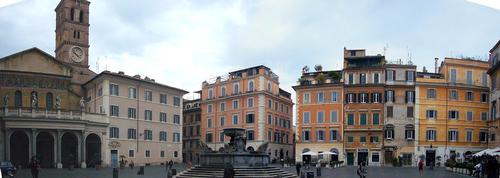 Trastevere RomePhoto: Lalupa CC 4.0 International no changes made
Trastevere RomePhoto: Lalupa CC 4.0 International no changes made
Furthermore, there is Travestere, the most authentic nightlife area in Rome. This is a lively and trendy neighborhood with restaurants, nice squares and cozy streets with a nice mix between tourists and locals.
Useful links Rome
BBC Country ProfilesWorld Fact Book Explore all Countries
How to call
Last updated November 2025
Copyright: Team - The World of Info